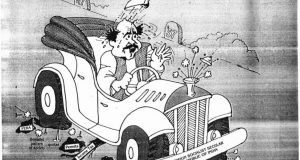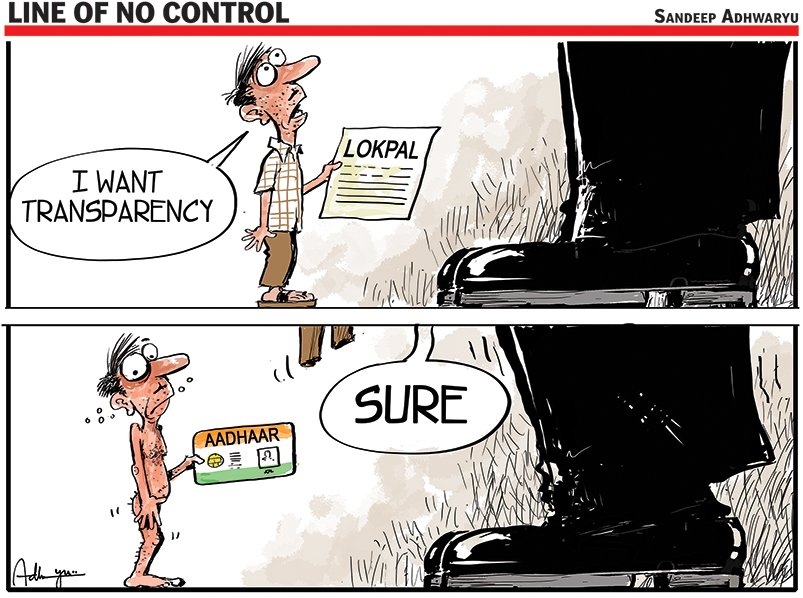The License Raj Era, India’s Latest Import Curbs, A Glimpse Of The License Raj 2.0?
India's recent adoption of import curbs on laptops, tablets, and PCs are potentially evoking memories of a bygone era - the infamous License Raj of the 1980s. A policy that once stifled India's economic growth and innovation, it thus becomes essential for India (govt) to tread carefully and avoid the pitfalls of history as it seeks to bolster its 'Make in India' initiative. While safeguarding domestic industries is crucial, India must steer clear of regressing into protectionism and instead embrace a forward-looking approach in order to remain competitive on the global stage.

License Raj, A Risky Path Ahead?
The Narendra Modi government’s decision to impose restrictions on laptop, tablet, and PC imports is a nod towards supporting indigenous manufacturing under the ‘Make in India’ campaign.
However, at the same time, it introduces a concern that India might be leaning back towards the strategies employed during the License Raj, a period notorious for stifling economic growth with excessive bureaucracy and regulations.

A Historical Perspective on Industrial Policy
Throughout history, countries have adopted industrial policies to catch up with advanced economies. From post-Industrial Revolution Europe to Japan’s meteoric rise in the 1970s and 80s, and even China’s recent ‘Make in China 2025’, industrial policy has been harnessed to varying degrees of success.
Yet, the dangers of overreliance and protectionism loom large, as exemplified by Europe’s struggle to convince the US to embrace open trade.
A Global Trend Towards Protectionism
However, the winds of protectionism are not confined to India’s shores alone; even economic powerhouses like the US are rolling out ‘Make in America’ policies, combining subsidies and protectionist measures to counteract competition, particularly from China.
The European Union has also dabbled in subsidies to secure domestic production; the shift is largely driven by concerns about climate change and the fragility of supply chains exposed by the pandemic.

The Dilemma of Protectionism
While the government’s intervention may be justified in addressing climate change, intertwining this with ‘Make at Home,’ policies can lead to inefficiencies and friction in international trade.
The International Monetary Fund (IMF) warns that such strategies could dent GDP growth by 1-2%, inviting retaliatory measures; thus, the delicate balance between safeguarding domestic interests and fostering global competitiveness becomes ever more challenging.
India’s Unique Challenge
India’s current push for industrial policy is primarily aimed at boosting domestic manufacturing through the ‘Make in India’ initiative.
While this approach has yielded positive results in sectors like mobile handset assembly, where the majority of devices are now domestically produced; however, as India eyes a more prominent role in semiconductor manufacturing and extends its Production-Linked Incentive (PLI) scheme to various industries, the challenges come to the fore.
The PLI scheme’s initial successes notwithstanding, a cautious approach is essential. While large firms have reaped benefits, focusing on job creation and supply chain development is crucial, but equally important is striking a balance between subsidizing industries and ensuring fiscal sustainability must be a top priority.
India’s experience during the License Raj era is a solid reminder of the consequences of rampant protectionism on growth.

The License Raj Era
Let us not forget the License Raj era; a prolonged period of bureaucratic control over India’s economy is enough examples of excessive government intervention’s perils.
Enforced predominantly during the mid-20th century, this era hampered economic growth stifled innovation, and subjected citizens to a web of regulations that dampened entrepreneurial spirit.
Initiated under the Nehruvian government, the License Raj symbolized an attempt to foster self-sufficiency and socialism, but its unintended consequences left a lasting impact on India’s economy and society.
The Origins Of The License Raj
The License Raj era was inaugurated under the leadership of Prime Minister Jawaharlal Nehru in the aftermath of India’s independence in 1947. It gained momentum in the 1950s and continued well into the 1980s. Under this system, the government assumed significant control over various industries, requiring businesses to obtain licenses for manufacturing, expansion, and even imports. This intricate web of licenses, permits, and quotas led to an environment of red tape and corruption, suffocating economic growth and development.
The Economic Need for Change
As the License Raj persisted, India’s economic growth rate remained stagnant, and industries struggled to compete on the global stage. The government’s monopoly on key sectors hindered innovation, discouraged foreign investment, and created an atmosphere of inefficiency and low productivity. The cumbersome bureaucracy and lack of competition culminated in what is infamously known as the “Hindu rate of growth,” characterized by an average annual GDP growth rate of around 3.5% during the License Raj era.
Winds of Change Through Liberalization and Economic Reforms
The turning point came in 1991 when India was grappling with a severe economic crisis, including a balance of payments crisis and dwindling foreign exchange reserves. The then-Finance Minister, Dr. Manmohan Singh, introduced a series of economic reforms that marked a departure from the socialist policies of the past. These reforms, collectively known as the “New Economic Policy,” aimed to liberalize the economy, reduce government intervention, and encourage private enterprise and foreign investment.

The License Raj had several detrimental effects on India’s economy and society; the perils of the same cannot be overstated,
Lack of Innovation: With stifled competition and limited access to resources, industries struggled to innovate and keep up with global technological advancements.
Corruption and Black Market: The complex web of licenses and permits created a breeding ground for corruption, leading to the growth of a shadow economy and the black market.
Inefficient Allocation of Resources: The government’s control over resource allocation led to inefficient use of capital, labour, and raw materials, hindering productivity and growth.
Limited Consumer Choices: The absence of competition resulted in limited consumer choices and poor-quality goods and services.
Brain Drain: Many skilled professionals and entrepreneurs chose to migrate to countries with more favourable economic environments, leading to a “brain drain.”
The Last Bit, India’s current trajectory, marked by import curbs on laptops and PCs, warrants close attention and introspection.
The echoes of the License Raj era should serve as a guiding light, urging India to tread the path of industrial policy with caution.
While the ‘Make in India’ initiative is commendable, it must be executed with finesse to avoid pitfalls of protectionism and inefficiency.
The global protectionist trend demands a judicious approach that balances safeguarding domestic interests and maintaining global competitiveness.
The License Raj era, the dangers of excessive government intervention in the economy is a legacy of sluggish growth, corruption, and inefficiency; thus, the need for a balanced approach that fosters innovation, encourages entrepreneurship and provides citizens with opportunities for economic advancement cannot be pushed under the carpet!
The reforms of 1991 marked a crucial turning point in India’s economic trajectory, paving the way for liberalization, globalization, and increased participation in the global economy.
As India continues to navigate the complexities of economic development, it must remember the lessons of the License Raj and strive for policies that empower individuals and industries while fostering sustainable growth, or we might just see a repeat of the bygone era!




